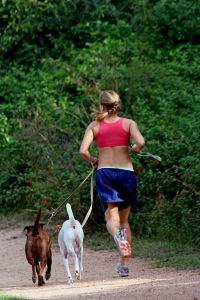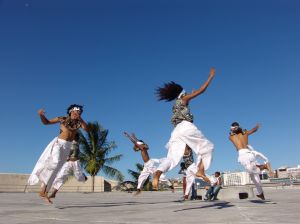In my post titled How My journey Began - Part 1, I mentioned a number of outstanding CAM specialists that I had the good fortune to consult with about treatment, nutrition, supplements and lifestyle changes necessary for good health and healing.
One of those practitioners is Dr. Moshe Frenkel, who is the founder and director of Integrative Oncology Consultants.
He is a clinical Associate Professor at the University of Texas and board-certified family physician with extensive experience in complementary and integrative medicine. In addition, he serves as the Chair of the Clinical Practice Committee of the Society of Integrative Oncology and is faculty of the Center for Mind Body Medicine.
Prior to directing Integrative Oncology Consultants, Dr. Frenkel was the medical
Director of the Integrative Medicine Program at M.D. Anderson Cancer Center in Houston Texas. Dr. Frenkel founded the first Integrative Medicine clinic in this center.
My phone consultation with him was preceded by filling out a form that gave him insight into my feelings, my goals, my fears and my current state of health. In other words, he was going to speak to me as a whole person, not as an illness. That fact alone raised my faith in the relevance of our dialogue.
People touched by cancer or a chronic illness are often advised by their doctor to avoid physical activity and rest as much as possible. But for cancer patients and survivors, regular moderate exercise can be a key in improving their quality of life. Recent research shows that exercise can benefit survivors throughout the cancer continuum.
It is important for a person with cancer to remain as physically active as possible. Not enough movement can result in loss of strength, function, and range of motion of the body. Exercise will help keep muscles functioning as well as improving energy levels and quality of life.
Exercise can also help during recovery from chemotherapy. While it may not be the first thing you want to do after chemo, research has shown that exercise helps battle cancer related fatigue.

Use the following tips to help you get started and keep you going.
-
Choose an exercise you enjoy.It’s easier to stick with a program if you enjoy it. Enjoy the outdoors? Start walking in parks around your neighborhood. Like to dance? Register for a ballroom dance class that gets you moving several times a week. Even if you can’t imagine yourself enjoying the exercise itself, do the exercise that has other rewarding attributes. For example, work out with friends so you can enjoy the social aspects of exercise.

- Start slow. The U.S. Surgeon General’s Report recommends at least 30 minutes of moderate intensity activity on most (5 or more) days of the week. Moderate intensity is the intensity of a brisk walk. Your heart rate is elevated and you’re breathing faster than usual, but you’re not working so hard that you get worn out after a few minutes. When doing moderate intensity exercise you should be able to talk, but not sing.
-
Break it up. If you feel like you don’t have time or energy for your full exercise session, divide it into shorter bouts. Three 10-minute exercise sessions are just as beneficial as one 30-minute session, and may be easier to fit into your schedule. Once you start though you may surprise yourself and want to continue going

-
Set short term, specific, and realistic goals. Remember that it takes many steps to get to the top of the mountain, and everybody has to do it one step at a time. Set realistic short-term goals for yourself, like exercising for 15 minutes on Monday, Wednesday, Friday, and Saturday this week. You can use these short-term goals to build up to longer term goals.
-
Monitor your activity. Many people find that it helps them to monitor their progress in writing. This can be as simple as keeping track of the days you exercise on a calendar posted on your refrigerator, or creating a graph of the amount of time you exercise each week so you can view your progress.
-
Don’t forget to reward yourself! But lay off that ice cream as your reward. (Unless it's my recipe for Ashta Ice Cream!) As we listed exercise has numerous benefits, but many of them are longer term so they don’t reinforce behavior change right away. Identify some rewards you can give yourself when you accomplish your goals.
- Don’t give up if you miss one or two session. Starting an exercise program, or increasing the amount of exercise you do, is an important step in developing a healthier lifestyle. However, making a lasting change in your life isn’t easy. Some weeks you will make your goals; others you might fall short. It is important to be persistent; if you don’t make your exercise goal, don’t se e that as a sign that you are not an "exerciser."
Examine your goals to make sure the

y are realistic, then make a plan for the next week. Whether you want to do a 5-minute walk or a fifty-minute walk, one of the most important habits you can acquire is planning when this walk will occur.
How much should I exercise?
The more intense an exercise, the shorter amount of time you need to exercise to get the same benefits. Similarly, you can do a lower intensity exercise for a longer amount of time to get the same benefits.
The table below lists some common exercises, their intensity level, and how many minutes per week you would need to engage in that activity for good health. If an activity is not listed, the average amount of time to spend  on a moderate intensity activity is 150 minutes per week.
on a moderate intensity activity is 150 minutes per week.
| Activity | Intensity (how hard) | Duration (how long per week) |
| Walking | About 3.5 mph | 150 minutes |
| Jogging | Light (about 5 mph) | 90 minutes |
| Swimming | General (not lap swimming) | 90 minutes |
| Dancing | Ball room | 180 minutes |
| Dancing | Fast, modern | 110 minutes |
| Aerobics | Low impact | 110 minutes |
| Water aerobics | Regular | 135 minutes |
| Stationary cycling | Light effort | 180 minutes |
| Cycling | Outdoors (about 10-11 mph) | 90 minutes |
| Tennis | Regular doubles | 80 minutes |

















